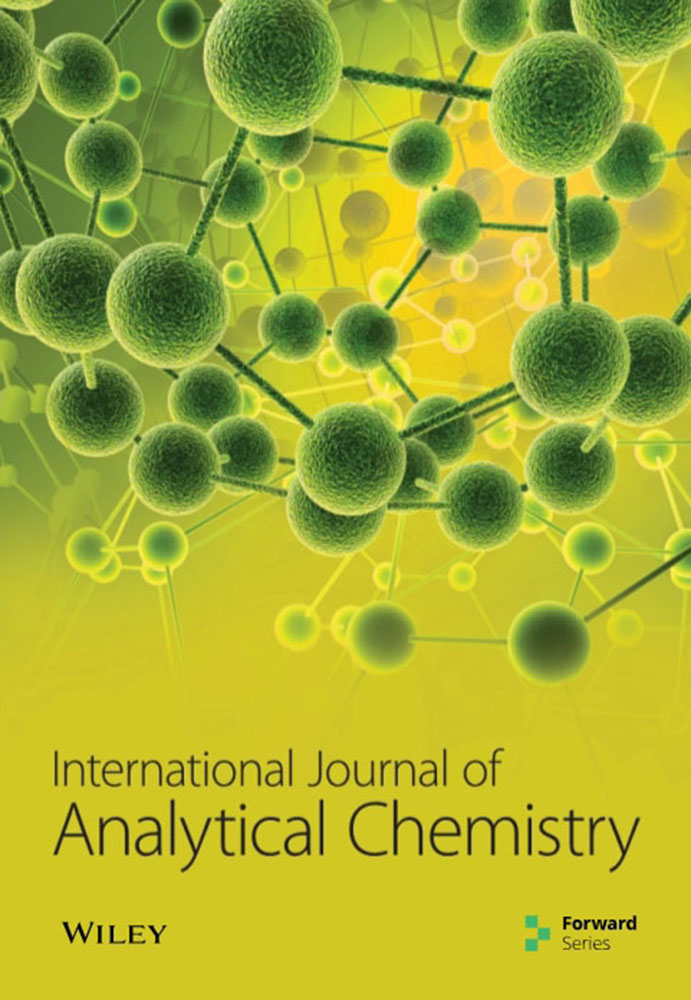利用液相色谱-串联质谱法(LC-MS/MS)测定番茄中多类农药残留的方法验证和测量不确定度估计
IF 1.5
4区 化学
Q3 CHEMISTRY, ANALYTICAL
引用次数: 0
摘要
方法验证是确保分析方法可靠性和准确性的重要技术。本研究旨在优化和验证一种快速、可靠、准确的方法,用于定量测定番茄基质中不同化学类别的农药残留。对各种方法的性能特征进行了测试,并与预定标准进行了比较。根据番茄种植中农药的使用情况和参考材料的可用性,选择了 26 种不同化学类别的农药。番茄样品中的农药残留采用 QuEChERS 技术提取,并进行了一些修改,然后注入 LC-MS/MS 系统,按照优化的方法进行操作。经过验证的方法具有合理的特异性,因为在农药的保留时间内没有基质成分的干扰。所有农药的校准曲线均表现出良好的线性,相关系数超过 0.99。番茄中的所有农药均未出现明显的基质效应,其数值均在±20%的范围内。除西维因外,所有农药在 5 μg/kg 浓度下都能成功定量,平均回收率超过 70%,相对标准偏差小于 20%。同样,还根据验证数据对测量不确定度进行了估计,发现其值低于 50%的默认限值。随后,该验证方法被用于分析 52 个本地采集的番茄样本。研究结果表明,在这些样品中只检测到四种所研究的农药,其浓度低于尼泊尔政府和食品法典委员会为番茄规定的最大残留限量(多菌灵、吡虫啉和甲霜灵各为 500 微克/千克)。本文章由计算机程序翻译,如有差异,请以英文原文为准。
Method Validation and Measurement Uncertainty Estimation for Determination of Multiclass Pesticide Residues in Tomato by Liquid Chromatography-Tandem Mass Spectrometry (LC-MS/MS)
Method validation is an essential technique for ensuring the reliability and accuracy of an analytical method. This study aimed to optimize and validate a fast, reliable, and accurate method for quantitatively determining pesticide residues of diverse chemical classes in the tomato matrix. Various method performance characteristics were tested and compared with predefined criteria. Twenty-six different pesticides of diverse chemical classes were selected based on their use in tomato cultivation and the availability of reference materials. The pesticide residues in tomato samples were extracted with the QuEChERS technique with some modifications, followed by injection into an LC-MS/MS system operating in an optimized method. The validated method demonstrated reasonable specificity, as there were no interferences from matrix components at the retention times of pesticides. The calibration curves for all pesticides exhibited excellent linearities, with correlation coefficients exceeding 0.99. No significant matrix effect was observed for all pesticides in tomatoes, as the values fell within the range of ±20%. All pesticides were quantified successfully at a concentration of 5 μg/kg except for carbaryl, with an average recovery of more than 70% and a relative standard deviation of less than 20%. Similarly, measurement uncertainties were also estimated based on the validation data, and the values were found below the default limit of 50%. Subsequently, the validated method was applied to analyze 52 locally collected tomato samples. Study findings revealed that only four of the studied pesticides were detected in these samples, and their concentrations were below the maximum residue limits (500 µg/kg each for carbendazim, imidacloprid, and metalaxyl) established for tomatoes by the Government of Nepal and the Codex Alimentarius Commission.
求助全文
通过发布文献求助,成功后即可免费获取论文全文。
去求助
来源期刊

International Journal of Analytical Chemistry
CHEMISTRY, ANALYTICAL-
CiteScore
3.10
自引率
5.60%
发文量
117
期刊介绍:
International Journal of Analytical Chemistry publishes original research articles that report new experimental results and methods, especially in relation to important analytes, difficult matrices, and topical samples. Investigations may be fundamental, or else related to specific applications; examples being biological, environmental and food testing, and analysis in chemical synthesis and materials processing.
As well as original research, the International Journal of Analytical Chemistry also publishes focused review articles that examine the state of the art, identify emerging trends, and suggest future directions for developing fields.
 求助内容:
求助内容: 应助结果提醒方式:
应助结果提醒方式:


